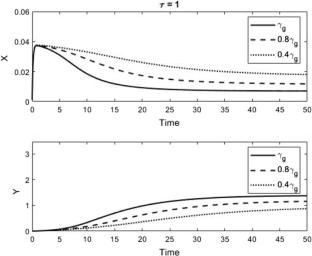Modeling the Impact of Delay on the Aggregation of AD Proteins
Abstract
Accumulation of the amyloid-\(\beta \) (A\(\beta \) ) peptide in the brain gives rise to a cascade of key events in the pathogenesis of Alzheimer’s disease (AD). It is verified by different research trials that the sleep-wake cycle directly affects A\(\beta \) levels in the brain. The catalytic nature of amyloidosis and the protein aggregation can be understood with the help of enzyme kinetics. During this research, the chemical kinetics of the enzyme and substrate are used to explore the initiation of Alzheimer’s disease, and the associated physiological factors, such as the sleep wake cycles, related to this symptomatology. The model is based on the concentration of the A\(\beta \) fibrils, such that the resulting solution from the mathematical model may help to monitor the concentration gradients (deposition) during sleep deprivation. The model proposed here analyzes the existence of two phases in the production of amyloid fibrils in the sleep deprivation condition: a first phase in which the soluble form of amyloid A\(\beta \) is dominant and a second phase in which the fibrillar form predominates and suggests that such product is the result of a strong imbalance between the production of amyloid A\(\beta \) and its clearance. The time dependent model with delay, helps to explore the production of soluble A\(\beta \) amyloid form by a defective circadian cycle. The limitations of the time dependent model are facilitated by the artificial intelligence (AI) time series forecasting tools.


 求助内容:
求助内容: 应助结果提醒方式:
应助结果提醒方式:


